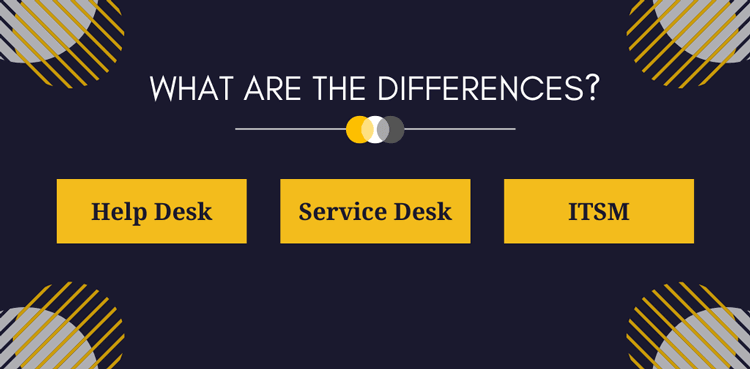What is First Call Resolution (FCR): Why It’s a Critical KPI Metric
One of the most important metrics and Key Performance Indicators (KPIs) in any help desk or customer service call centers worldwide is First Call Resolution (FCR).

Whether you're providing broadband and phone services or IT Service Management (ITSM), customers want quick responses and resolutions when they've encountered a problem. Team leaders measure this using First Contact Resolution. Of course, there are other key metrics too, such as Customer Satisfaction scores (CSAT), Customer Effort Scores (CES), and numerous others. However, FCR is a globally-recognized benchmark help desk or call center metric that impacts your entire customer service operation.
Let's take a closer look at what this means and how to measure and improve FCR times.
What Does First Call Resolution (FCR) Mean?
First Call Resolution (FCR) means a team's ability to meet the customer's need at the first point of contact. It is also known as First Call or First Touch Resolution.
An ideal FCR scenario is:
- A customer has a problem
- They've looked at your self-serve articles, knowledge base, FAQ's, troubleshooting, and any other resources provided
- Regrettably, an answer isn't to be found, or they don't have time to look
- The customer contacts your IT or customer service team (whether via Live Chat, putting in a support ticket, email, or phone)
- An agent resolves the problem at this first point of contact, quickly, and the customer is happy
When FCR goes wrong, customers need to call back to get their issues resolved. Not only is this frustrating for customers, but it also adds more work to already overworked teams. Increased workloads result in increased costs and a reduction in customer satisfaction rates.
Unhappy customers will take their business elsewhere. Costs increase, and so do churn rates, causing businesses to lose customers. They are also more likely to vent their frustration on social media and tell other people, causing reputational damage.
When FCR rates are high, everyone wins:
- Customers have a better overall customer experience and give better customer feedback
- There are fewer repeat calls
- Churn rates stay low
- Agent productivity increases
- Lower-level tech support is needed less often
- There's a better possibility you can upsell happy customers on other products and services.
How Do You Measure Your First Call Resolution Rate?
Every organization measures FCR in different ways. After all, there are numerous factors at play:
- Does it still count as a first contact resolution if it needs to be escalated and another agent calls the customer back?
- What if a customer needs to be transferred to another team or department, and they resolve the issue?
- What if an agent calls through to the wrong department and needs to contact the customer back?
The beauty of this is customer service and IT leaders get to decide what counts as "first contact resolution," so agents and the whole department aren't being unfairly monitored against a metric that's impossible to achieve. It might take some tweaking to get this right.
Once how you measure FCR rates has been decided and it's been clearly defined, consistency is critical.
Calculate FCR this way:
Total number of successful FCR calls or tickets / Total number of calls or tickets = FCR
Want to know what your organization's FCR rate is? Try out our First Call Resolution Calculator Tool.
How Can You Improve Your FCR?
There are numerous ways organizations can improve First Call Resolution scores:
- Start by looking at the whole customer journey. Is there more you can do to support customers before they need to call or put in a ticket?
- How many calls or tickets are actually second touch-points for customers after they've tried and failed to find what they need via your self-help solutions?
- If the same types of calls and tickets keep reoccurring, it's time to turn those questions into self-help answers. Anything you can do to take the pressure off customer support or Level 1 IT agents is a positive step, as that will increase FCR scores for more complex queries.
- Make sure your team is equipped with a robust internal knowledge base. This way, agents can more effectively and efficiently help customers at first contact, instead of having to keep them waiting, call them back, or escalate an issue to another team member.
- Another way to improve first contact rates is to avoid setting conflicting goals. Otherwise, you're forcing agents to choose between one KPI and another. For example, "Do I resolve or escalate this in 5 minutes, or do I take longer to resolve it?" (Knowing they can, if they had more time).
Conclusion: The Benefits of FCR Strategies
As FCR improves, the overall cost of providing customer support decreases.
Taking an example from the IT industry:
- Analysts estimate the mean cost to resolve a ticket on level one to be about $32 (e.g., Level 1 support tickets). Based on industry averages, the mean cost to resolve an escalated ticket is about $60.
- In an environment averaging 4,000 calls per month, improving FCR from 50% to 75% reduces the number of tickets requiring escalation by 1,000 per month. The total cost to support those tickets is also reduced, generating an estimated savings of $28,000 per month based on current ITSM industry averages.
- Improving FCR reduces costs and churn and has a positive impact on CSAT and other scores.
For an in-depth study of this and other proven techniques to drive first-call resolution at the service desk and add value to your organization, read Giva's Whitepaper Service Desk Optimization: 40 to 80 in No Time Flat.
Giva Can Help Your FCR Rates
Giva's ITSM Service Desk and Customer Service SaaS solutions is perfectly equipped to help organizations improve FCR scores and metrics. Giva provides real-time monitoring of customer requests. Nothing is ever overlooked.
Collect and monitor all of the data your team and managers need to improve numerous KPIs, including FCR. Support front-line agents more effectively with an out-of-the-box SaaS-based solution for customer service and ITSM.
With Giva, you can target respond/resolve times, measure KPIs, and deliver excellent service consistently.
Since 1999, Giva has delivered a top-notch cloud-based customer service software solution. See for yourself why our customers rate Giva's cloud solutions 4.9 out of 5 stars. Sign-up for a 30-day free trial, or talk to us for a no-pressure help desk or customer service software demo.





